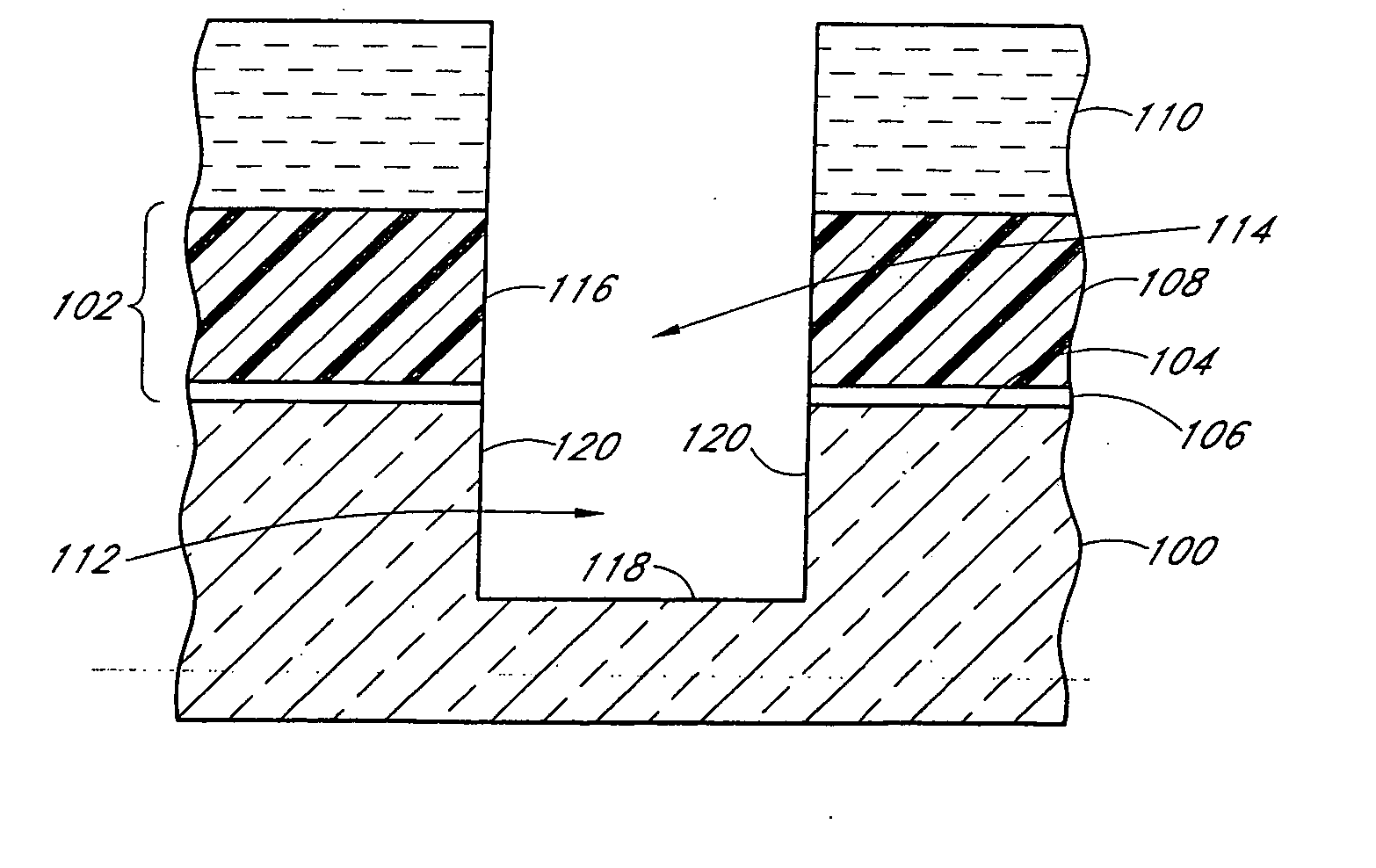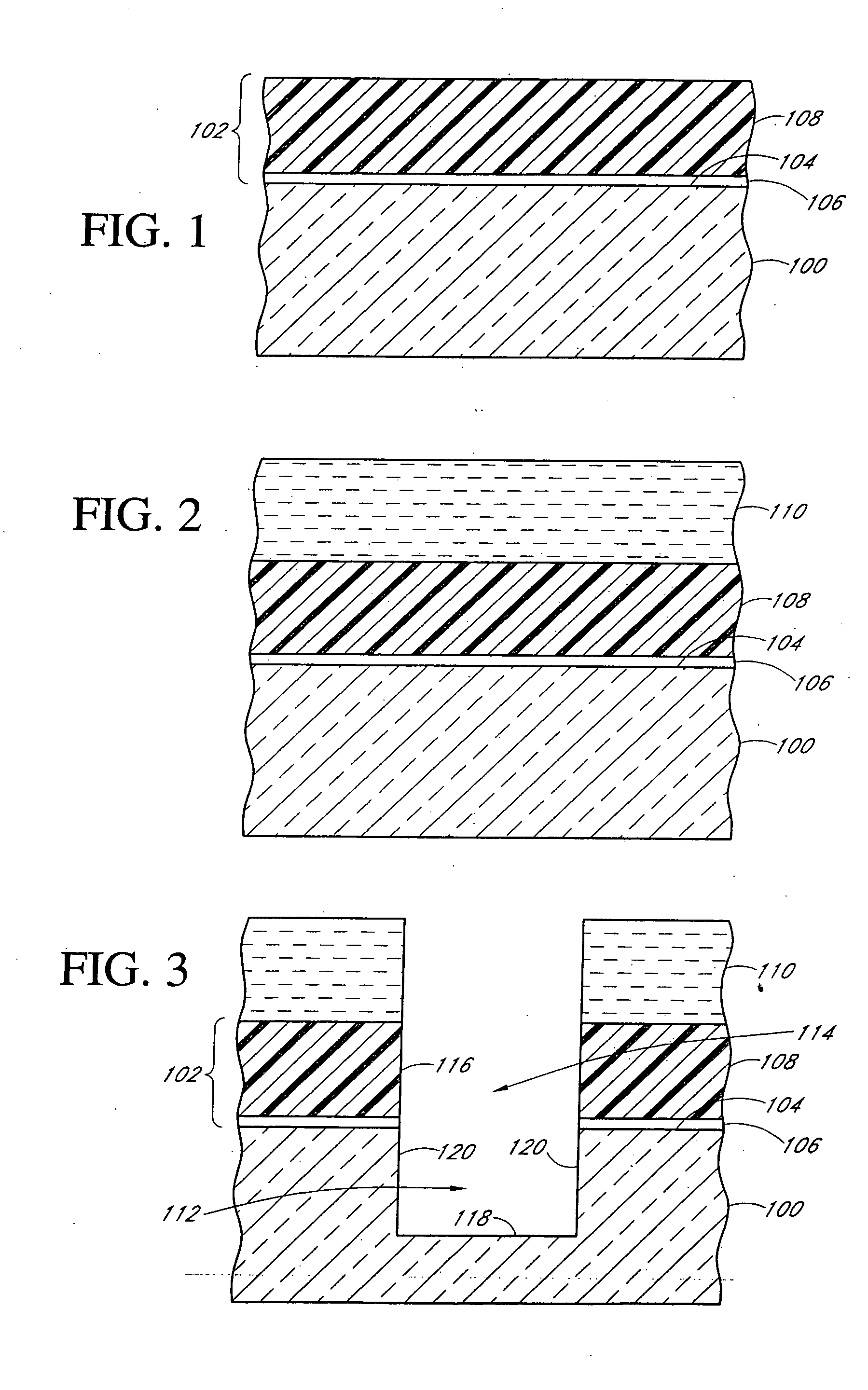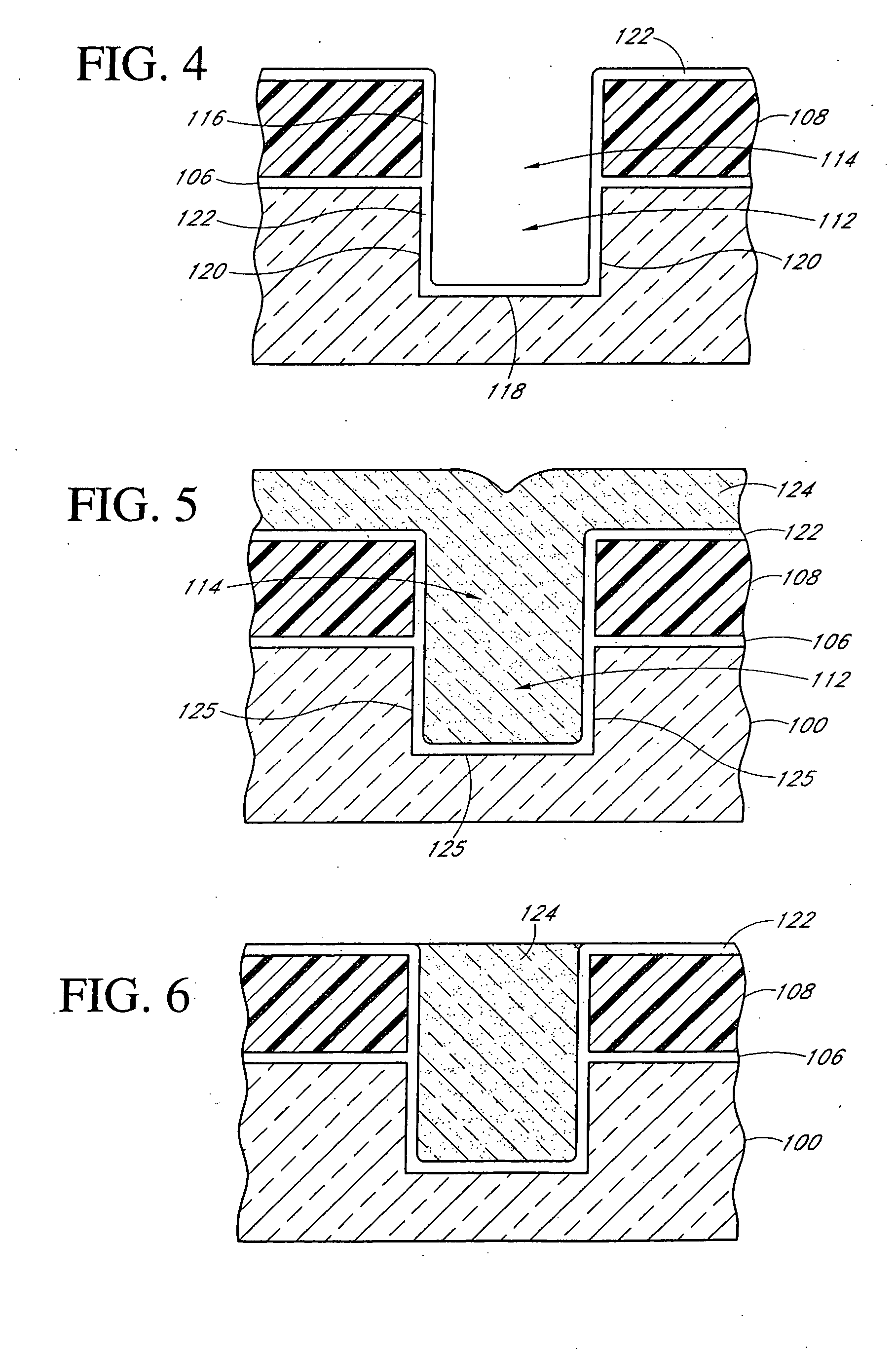Selectively doped trench device isolation
- Summary
- Abstract
- Description
- Claims
- Application Information
AI Technical Summary
Benefits of technology
Problems solved by technology
Method used
Image
Examples
Embodiment Construction
[0029] Reference will now be made to the drawings wherein like numerals refer to like parts throughout. FIG. 1 illustrates a semiconductor substrate 100 where a mask structure 102 is formed on a top surface 104 of the substrate 100. In this embodiment, the semiconductor substrate 100 preferably comprises a p-type silicon substrate, and the mask structure 102 may be comprised of a silicon oxide layer 106 and a nitride layer 108. The silicon oxide layer 106, often referred to as pad-oxide layer, may be formed by oxidation of the top surface 104 using any of a number of well-known wet or dry oxidation techniques so as to grow a silicon oxide layer with a thickness on the order of approximately 30 to 300 Angstroms. The nitride layer 108 may be formed on the pad-oxide layer 106 using any of a well-known deposition processes, preferably a Chemical Vapor Deposition (CVD) process. The nitride layer may preferably be deposited to a thickness of approximately 1000-2500 A.
[0030] As shown in F...
PUM
 Login to View More
Login to View More Abstract
Description
Claims
Application Information
 Login to View More
Login to View More - R&D
- Intellectual Property
- Life Sciences
- Materials
- Tech Scout
- Unparalleled Data Quality
- Higher Quality Content
- 60% Fewer Hallucinations
Browse by: Latest US Patents, China's latest patents, Technical Efficacy Thesaurus, Application Domain, Technology Topic, Popular Technical Reports.
© 2025 PatSnap. All rights reserved.Legal|Privacy policy|Modern Slavery Act Transparency Statement|Sitemap|About US| Contact US: help@patsnap.com



